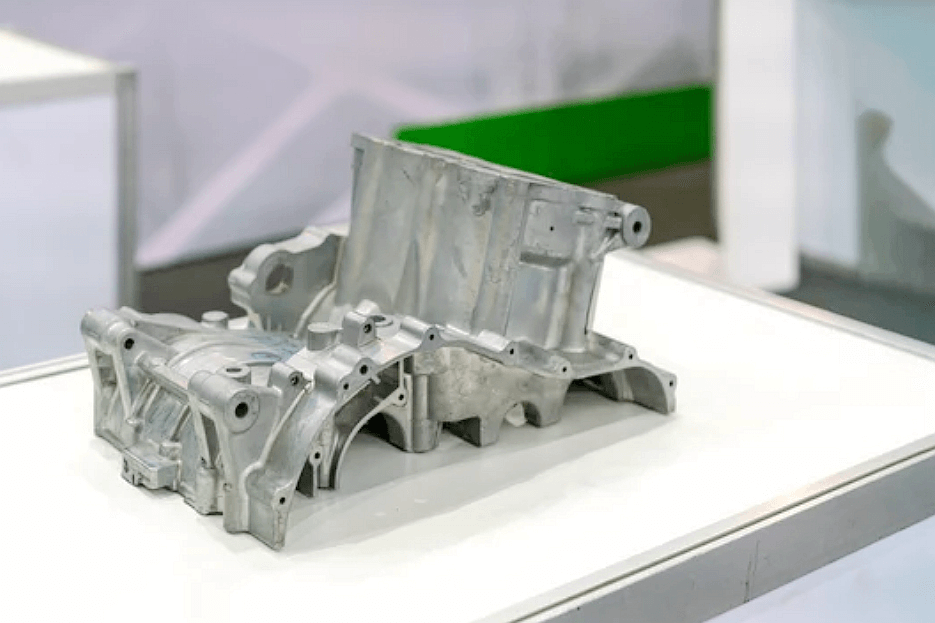Ultimate Guide to Aluminum Die Casting Process
If you are designing aluminum parts, it is important to consider the manufacturing process. Among all aluminum forming processes, aluminum die casting is the preferred solution.
Aluminum is a lightweight alloy with high dimensional stability. Therefore, aluminum die casting is a popular manufacturing process that can produce complex shapes and designs with thin-walled sections. Therefore, they are popular metals in various industries.
This article will help you understand the basics of aluminum die casting process. Let’s take a deeper look at the process.
1.What is the aluminum die casting process?
Aluminum die casting is a manufacturing method for making metal parts. Aluminum rods need to be heated at high temperatures and completely melted, and then forced into a pre-formed mold cavity to make the required metal parts.
The aluminum die casting process uses the cold chamber of the casting machine. The reason for melting aluminum in a cold chamber machine is that if the injection mechanism is submerged in water like the hot chamber process, the high molten aluminum temperature will damage the machine.
In a cold chamber machine, the furnace is separated and then the molten aluminum alloy is scooped from the furnace into the mold under high pressure. After the molten aluminum is injected, it takes some time to solidify. Then, you need to separate the two halves of the mold to expose the aluminum casting.
The final product has a smooth surface. Most of the time, the finished product requires minimal processing and can be quickly put into the delivery stage. In addition, the die casting mold can be recycled to make the same part before it is damaged. Therefore, aluminum die casting is an ideal manufacturing process for large-scale production. This is why manufacturers prefer die casting and it is popular in various industries.
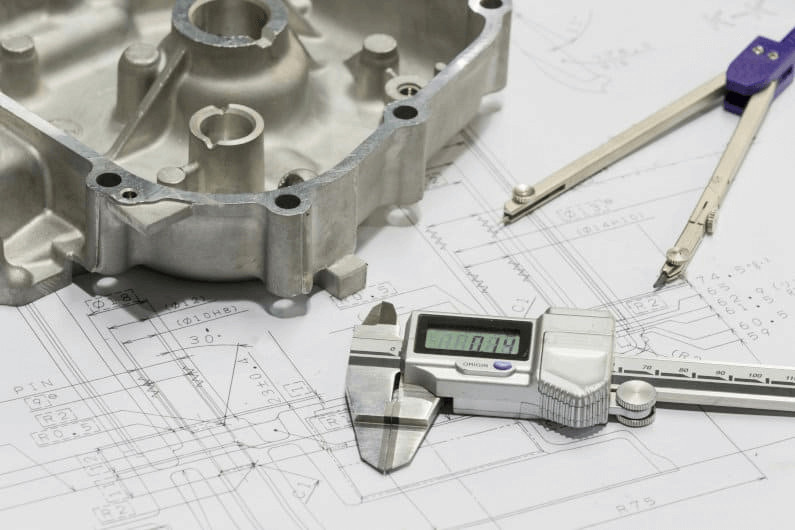
2.Advantages of aluminum die casting
Aluminum castings have a wide range of surface treatment options. Dimensional stability is another big advantage of the aluminum die casting process. In addition, they are versatile and can be used in almost any industry.
Here we have listed some of the advantages of aluminum casting:
- Excellent surface finish of finished product
- Good tensile strength
- Low-cost raw materials
- Reduced porosity and impurities
- Strong molecular structure ensures dimensional tolerances without micro cracks
- Thickness accuracy (can reach less than 1.5 thickness)
- Air tightness and pressure
- Long life
- A wide range of alloys are available with different chemical and mechanical properties
- Very complex parts can be produced
3.Common die casting aluminum alloys
There are several aluminum alloys commonly used in die casting. These include:
- A380
- A390
- A360
- A413
- ADC-12
- ADC-1
When preparing for aluminum alloy die casting, choosing the right alloy is your first priority. Let us give you some ideas about the characteristics of different common die casting aluminum alloys to help you.
For example, A390 alloys have high hardness and excellent wear resistance, but are less flexible than all other alloys. Therefore, they are suitable for applications such as automotive engine blocks.
On the other hand, A360 has excellent pressure resistance and corrosion resistance. In addition, they have excellent fluidity when molten. The alloy is very suitable for 5G communication boxes, automotive controller housings, automotive oil pans, etc.
A380 alloys have excellent product and casting properties. Therefore, they are the choice of manufacturers for a wide range of applications. For example, power tools, household furniture, electronic equipment chassis, gearbox housings, engine brackets, and many other applications use A380 alloys.
4.Characteristics of aluminum alloy die castings
Aluminum alloys have a variety of advanced chemical and mechanical properties. They have strong corrosion resistance and high heat dissipation. In addition, the strength-to-weight ratio is also a significant advantage. These characteristics help mechanical engineers flexibly design aluminum die castings.
Here are some of the properties:
- Lightweight
- Corrosion resistance
- Excellent strength to weight ratio
- High operating temperature
- Good stiffness
- Finishing properties
- RFI and EMI shielding
- Excellent thermal conductivity
- High electrical conductivity
- Fully recyclable
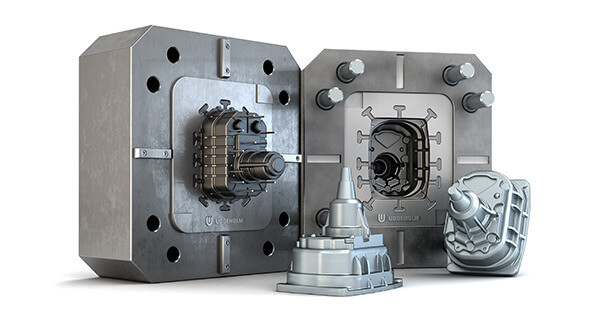
5.Surface finishing options for die cast aluminum
Parts made using the die cast aluminum process require minimal machining. But nothing is perfect. So sometimes you need to perform surface finishing operations for aesthetic and other functional purposes.
Here are some of the most popular surface finishing options for aluminum castings.
1) Anodizing
Anodized die cast aluminum is an affordable option that makes parts corrosion resistant and durable. It carries a non-conductive protective layer on the part.
Aluminum is a highly conductive material, but the oxide layer has ceramic-like chemical and physical properties, i.e. electrical insulation, so anodized die cast aluminum becomes non-conductive.
However, anodized aluminum exhibits limited conductivity by contact. This is because the surrounding oxide layer is thin. But the conductivity is very low compared to untreated aluminum. Therefore, if your application requires electrical conductivity through aluminum, you should choose another surface treatment option.
2) Powder coating
Powder coating is one of the most popular surface treatment methods for aluminum die castings. It occurs at higher temperatures and is relatively difficult to accomplish. But this method makes the parts dent and scratch resistant. In addition, you will get a variety of colors, textures, and glossiness.
3) Chemical film
This is another popular surface treatment option for aluminum die casting materials. You can apply it in a variety of ways, such as spraying, dipping, brushing, etc. The only difference is that it is conductive.
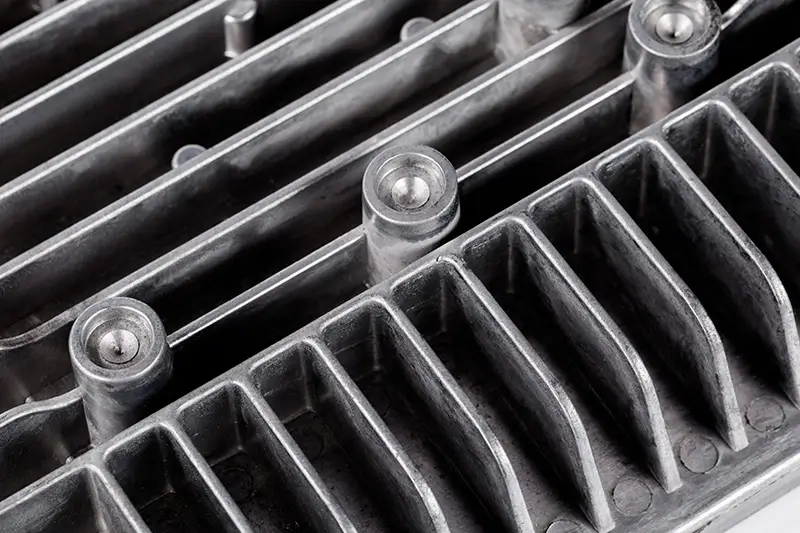
6.Applications of aluminum castings
Aluminum alloys have some excellent mechanical advantages. Therefore, you will see them in many applications. For example, they are an integral part of the automotive and construction industries.
According to reports, the aluminum casting market size was $50.5 billion in 2019 and is expected to grow at a compound annual growth rate (CAGR) of 6.4% from 2000 to 2027. More industries will join this industry and new applications will be developed.
Here are some of the main applications of aluminum alloy die casting.
1) Construction
You will see aluminum in roof superstructures, window frames, etc. Today, large structures such as bridges and commercial buildings also use die-cast aluminum parts in their construction.
2) Automobiles
Aluminum alloys are lightweight, which is also a must-have feature of modern vehicles. Therefore, you will see a wide range of applications of these alloys in the automotive industry. From engines to body parts, they are everywhere.
3) Electronics Industry
No industry has grown faster than the electronics industry in the past two decades. The innovation of consumer products in these industries has been outstanding. And aluminum has played a major role in the production of these consumer products. From smartphones to 5G network housings, die-cast aluminum alloys play a major role in this development.
4) Furniture
Aluminum has a high strength-to-weight ratio and is corrosion-resistant. Moreover, they are not expensive. Therefore, the furniture industry uses aluminum alloys to manufacture a variety of home and office furniture.
For example, you can see that more and more chairs are made of die-cast aluminum. Moreover, many important furniture components are made of aluminum, such as door locks, hinges, knobs, and other aluminum accessories.
5) Aerospace Industry
Like the automotive industry, the aerospace industry also requires an alloy that is lightweight and impact-resistant. Moreover, the aerospace industry requires complex tools and high-strength structural components. Therefore, aluminum die casting materials are used in various parts of aircraft.
Some aerospace parts are made of die-cast aluminum, such as aircraft engine piston heads, cargo loading housings, fuel system parts, aircraft distributor cap housings, and lighting fixture parts and electronic housing retaining ring parts.
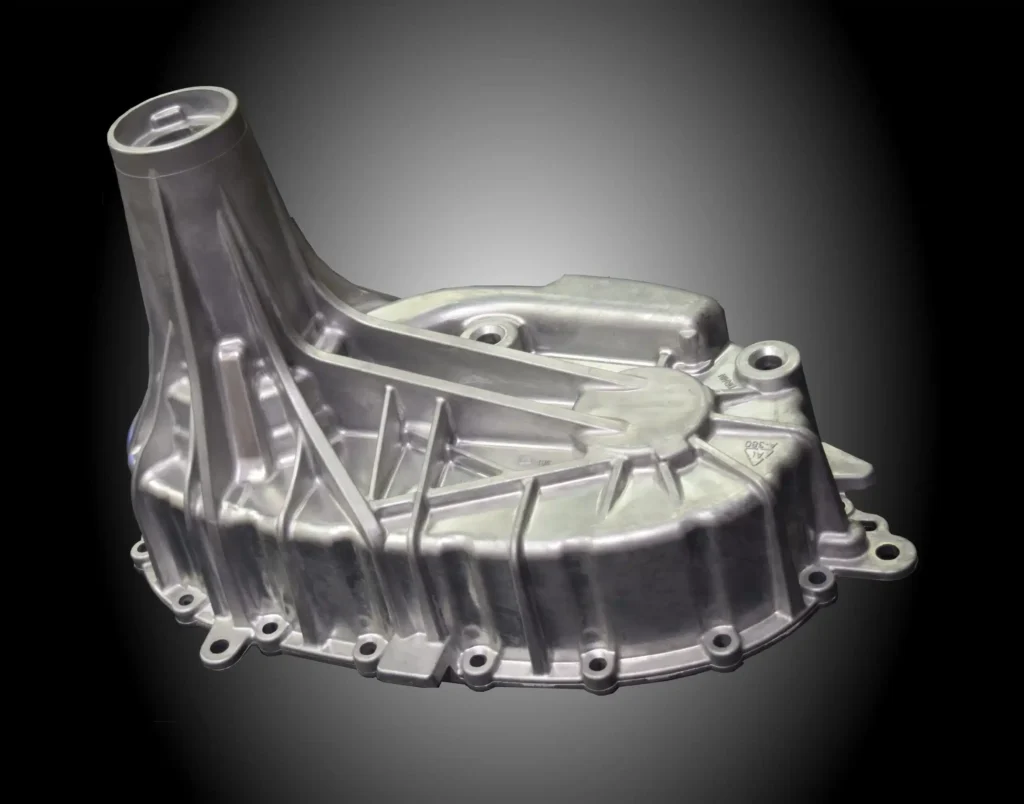
7.Aluminum Die Casting Design – 3 Factors to Consider
Manufacturers need to take some measures with the aluminum die casting process.
1) Mold Design
The first important thing is the mold design. The design must be efficient so that you can effortlessly inject the molten aluminum and take out the finished part. Every mold has a parting line (the line that separates the two halves), and the designer should consider this line before finalizing the design.
2) Location of Injection Points
The next important factor to consider is the location of the injection points. You can add multiple injection points. You can do this if there is a chance that the molten aluminum will solidify before it reaches every gap in the mold. Moreover, it also helps with the cavity in the design.
3) Chamber Wall Thickness
Part wall thickness is another factor you should consider. With the help of automation technology and advanced machines, there is no minimum thickness requirement. But for better results, it is better to choose a consistent thickness for better results.
8.What is the difference between aluminum die casting and sand casting?
The most significant difference between die casting and sand casting is the mold making material. Aluminum casting uses molds made of aluminum alloy. On the other hand, sand casting uses molds made of sand. Sand casting is able to handle more complex designs. At the same time, die casting offers higher dimensional accuracy and speed.
Another important difference is that sand casting produces thicker walls, while die casting produces thinner walls. Therefore, sand casting is not suitable for small parts.
Production speed is another important difference between the two technologies. Die casting tooling is a complex task that takes quite a long time. On the other hand, sand casting tooling is a simple process that takes less time than die casting.
Die casting is ideal for large-scale production, such as if you need thousands of parts. But sand casting is ideal for small-scale production of 100-150 units.
9.Conclusion
Die casting can be an expensive method if you have a low number of parts to process. However, if you have a high number of parts to process, die casting is the most cost-effective process. Manufacturers choose aluminum over other metals because of its unique properties. In addition, lower material costs also help manufacturers increase revenue margins.
If you are looking for an experienced aluminum die casting manufacturer, Xavier is your ideal choice. The Xavier team is well equipped to provide high-quality aluminum die casting solutions. If you need more information or want to discuss your processing needs with us, please feel free to contact us.
